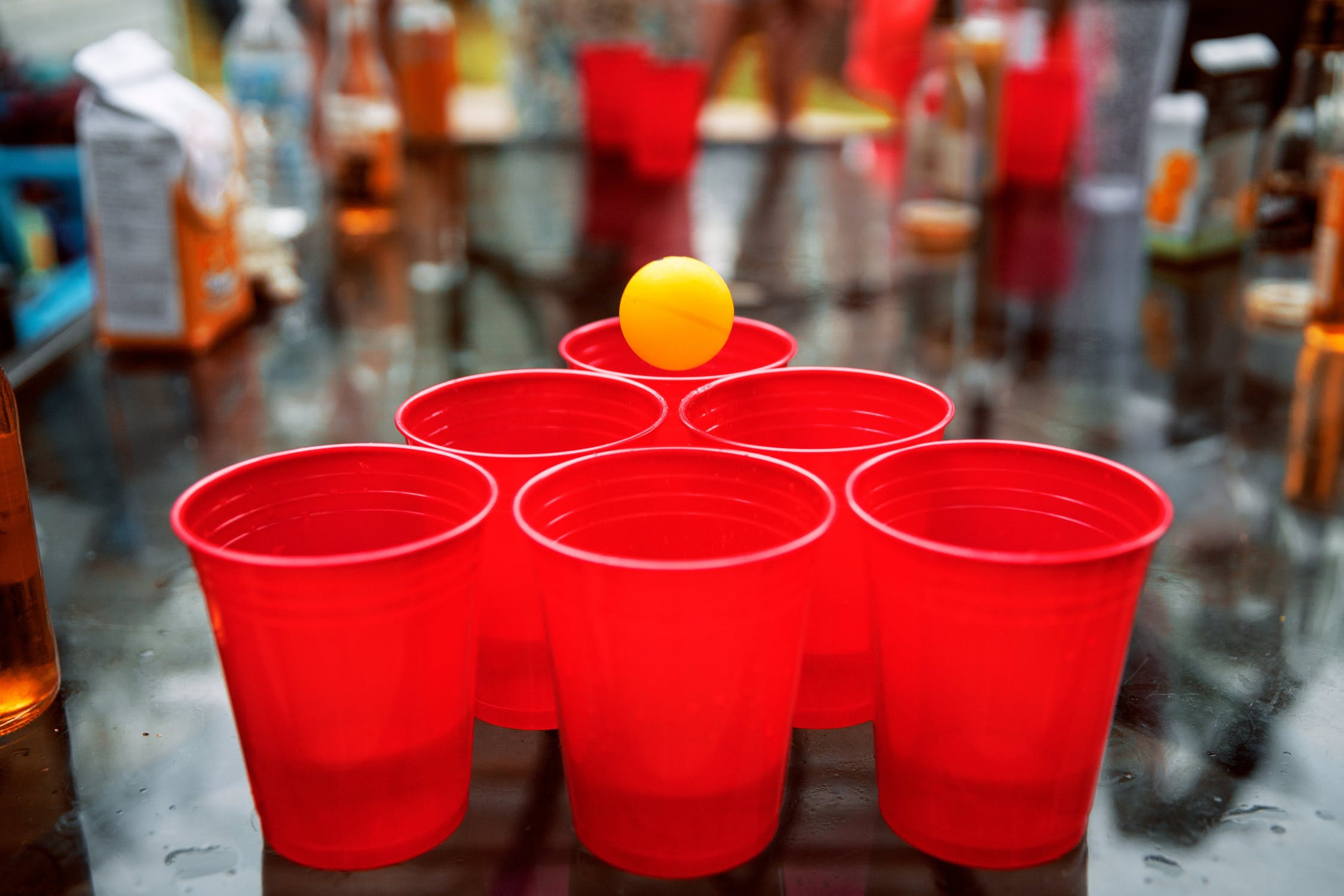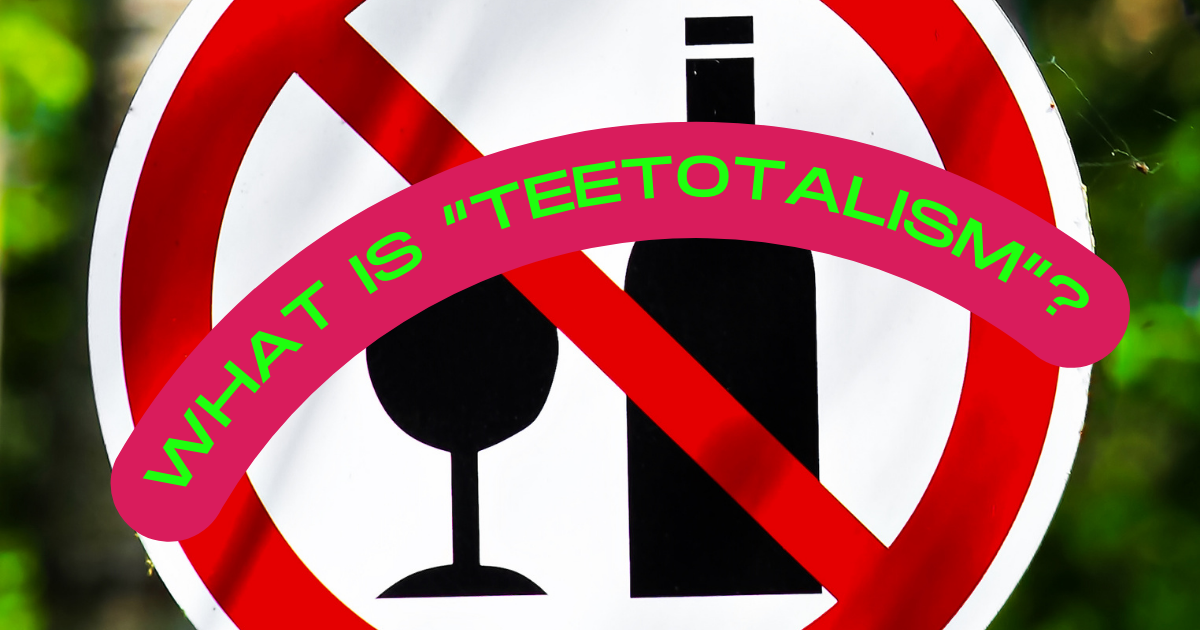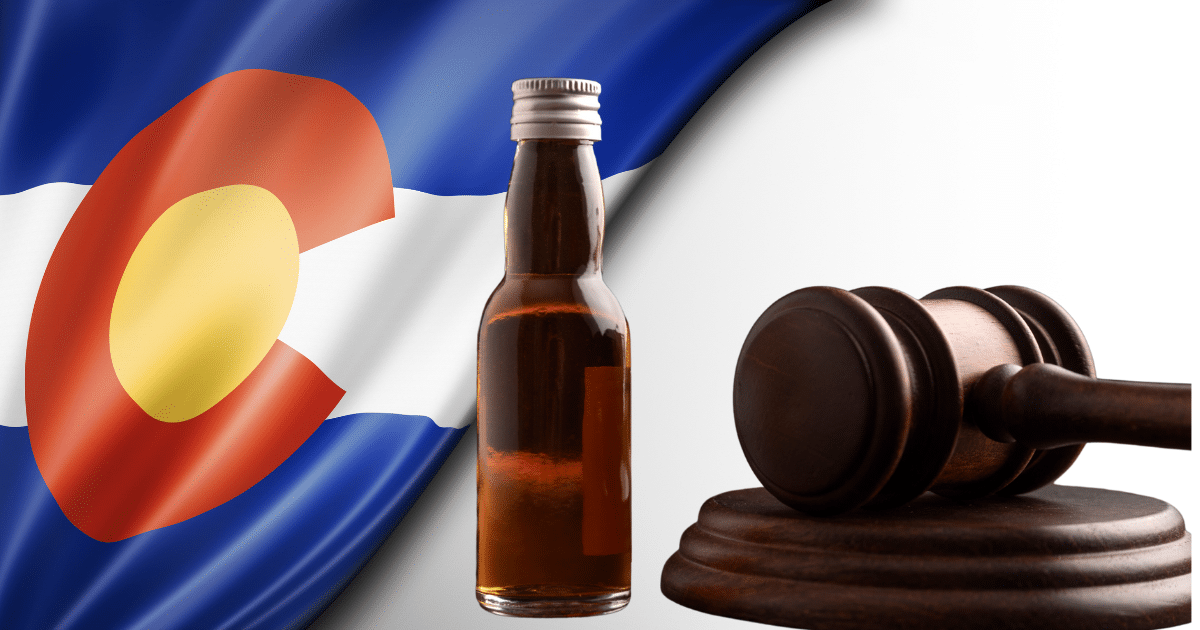Today, we’ll be looking at some of the hidden dangers of playing drinking games.
Prepartying, or “pregaming”, and drinking games might seem like an inevitable part of college culture, a rite of passage that begins in high school in many cases.
Since ancient Greek times, young people have played games while drinking so there’s certainly nothing new about competitive drinking but how prevalent are these games today, though?
Well, over 80% of college students have played a drinking game according to the summary of findings by the University of Indiana researchers. Among self-identified “drinkers”, participation in drinking games rose to 91%.
The issue with drinking games is centered on the high-risk behaviors of heavy drinking and intoxication.
Opponents of drinking games suggest they trivialize the dangers of binge drinking while encouraging excessive alcohol consumption. There’s often heavy peer pressure to get involved with these games and those who can hold their liquor are glorified.
Before we explore the direct negative outcomes drinking games can bring about, let’s look at what a drinking game actually is and some of the commonly played games.
What Are Drinking Games?
In the simplest sense, drinking games are any form of activity where alcohol consumption is the primary focus. There are hundreds of these games with rules and variables often changing.
There’s no standardized definition of a drinking game although these factors are common across all drinking games:
- Drinking games are social drinking events.
- These games are played according to rules determining the quantity and frequency of alcohol consumed.
- The core purpose of the game is to drink large volumes of alcohol in a short space of time with intoxication as the end goal.
There are many ways of classifying different types of drinking games. They can be cleaved into the following broad types of game:
- Even competition games: This type of drinking game sees you take turns with your opponent, whether playing individually or as a team. The only goal is to make the losing player or team drink.
- Targeted, skilled games: Some simple strategy is involved with these games. Perhaps the winner chooses who needs to drink and when.
- Communal games: This type of game doesn’t result in a formal winner or loser. Instead, a common rule is agreed upon so all participants drink at a certain trigger. This could be a word in a song or movie or it could be when something specific happens in a sports games.
- Chance games: There’s no strategy here with everything hinging on the roll of a die or the draw of a card. Who, when and how much to drink are all determined purely by chance.
- Extreme consumption games: These games typically lack rules and extreme consumption is the only goal.
With Beer Pong so popular there’s even a World Series now and Flip Cup showing no signs of fading in reputation, how about some other more dangerous games?
- Edward Fortyhands: You rather inelegantly tape a 40oz bottle to each of your hands. The only way you can start using your hands again is to finish the malt liquor inside the bottles. In some iterations of this game, you need to physically break the bottle adding another layer of complexity and danger.
- Power Hour: If you’re playing Power Hour, you’ll be drinking a shot of beer every minute for a full hour. Follow through with this game and you’ll have consumed the equivalent of 10 beers in an hour. This is obviously not good news.
- 60 Seconds: Players choose a number between 1 and 60. Once the second clock on the clock hits your number, it’s time to drink beer for sixty seconds flat. If you don’t have an analogue clock in view, this game can also be played to music. The last drinker standing is the winner. This is a mix-up a game of chance with some extreme consumption thrown in.
- 21 for 21: The sole objective of this game is to consume 21 shots of alcohol as swiftly as possible. This amount of alcohol is excessive even for heavy drinkers. For light to moderate drinkers, 21 for 21 can be fatal.
- Vodka Eyeballing: This outlandish game is said to have originated in the UK. The object is straightforward: pour vodka directly into your eyes for a faster high. The serious inbuilt danger with this game is the way vodka can remove your eye’s protective membrane leading to permanent cornea damage. You’ve come a long way from social drinking when you’re eyeballing vodka. Just don’t do it!
Why Are Drinking Games Dangerous?
Drinking games, then, are dangerous primarily because of the way they encourage drinking a great deal of alcohol in a short space of time. The nature of the game is secondary with the danger derived from what happens after playing the game.
Rather than any direct result of the game itself, the way you are put into the world of other high risk behaviors is where the danger lies with drinking games. The very fact that you’re playing one increases the likelihood you’ll get drunk in a short period and that something adverse might happen as a result.
We’ll look now at the following 5 dangers you can expose yourself to both short-term and long-term as a result of those seemingly innocuous drinking games.
- Danger #1: Drinking Games Are a Form of Binge Drinking
- Danger #2: Risk of Alcohol Poisoning
- Danger #3: Developing Alcohol Use Disorder Over Time
- Danger #4: Exposure to Negative Consequences of Being Drunk
- Danger #5: Assorted Long-Term Risks of Alcohol Abuse
1. Drinking Games Are a Form of Binge Drinking
While binge drinking is often glamorized on the big screen, check out the downtown streets anywhere late at night on weekends and you’ll see the seedy side of drinking too much too quickly.
Youngsters crouched down vomiting on the sidewalk, fights breaking out, police called out.
What exactly is binge drinking, then?
Binge drinking is defined as a woman drinking more than 4 drinks in a 2-hour time period or a man drinking 5 drinks or more within the same timeframe.
For the purposes of the above definition by the NIAAA (National Institute on Alcohol Abuse and Alcoholism), one drink is:
- Beer (12oz)
- Wine (5oz)
- Spirits (1.5oz)
Consuming that amount of alcohol in such a short space of time will send your BAC (blood alcohol concentration) levels up to 0.08%.
Now, by definition, most drinking games are binge drinking since you’re encouraged to drink quickly and copiously by the very rules of the game.
It’s here that interesting findings were revealed in a classic 1990s study on drinking games concerning how binge drinking can have knock-on effects.
This was a cross-sectional descriptive study concerning students playing drinking games who went on to experience any one of the following 17 problems:
- Arrested for DWI
- Attended class after drinking
- Criticized by date for drinking too much
- Damaged property
- Driven car after several drinks
- Driven car knowing had too much to drink
- Driven while drinking
- Had a fight
- Hangover
- Legal troubles
- Lost a job
- Lower grades
- Missed classes due to drinking
- Missed classes due to hangover
- Nausea or vomited
- Thought could have drinking problem
- Trouble with school administration
Students had been assessed across 2 categories:
- Light-moderate drinkers: Drinking at least once a year but not drinking more than 4 drinks a week. These drinkers also drink 5 or more drinks not more than once a month
- Heavy drinkers: Drinking 5 or more drinks in a single sitting on a weekly basis
It was actually the light and moderate drinkers who appeared to have more subsequent problems related to alcohol after playing drinking games.
Now, although this might mean that heavy drinkers experienced more fallout from alcohol whether or not they played drinking games, it shows that even those students with no formal alcohol dependency can be impacted adversely by drinking games.
We’re certainly not here in an attempt to start breaking up parties or changing traditions that have been around for generations. We are here, though, to point out the facts and the evidence suggests drinking games can have a domino effect in other areas of the game players’ lives.
While binge drinking is not the same as AUD (alcohol use disorder), it can increase the chance of AUD developing. This can happen relatively quickly, too. It’s sobering to read that, although 80% of binge drinkers are not dependent on alcohol, binge drinking is responsible for the most deaths from alcohol overall.
2. Risk of Alcohol Poisoning
Drinking too much alcohol in too short a space of time can be dangerous and even fatal. 6 Americans die from alcohol poisoning every single day.
When you’re playing any kind of drinking game, there’s a serious chance you’ll bring about alcohol poisoning.
Factors like age, gender, height, weight and tolerance can all influence the likelihood you’ll experience alcohol poisoning. Regardless of these variables, as you play a drinking game and your blood alcohol content (BAC) level rises, if these levels become toxic, you’ll suffer from alcohol poisoning.
With alcohol poisoning, your liver is simply unable to process the toxins from alcohol quickly enough. Your body continues to take these toxins on board as the drinking game progresses and you end up exhibiting signs of extreme drunkenness as your BAC levels continue to increase.
Alcohol poisoning is a legitimate medical emergency so if you suspect you or anyone you’re playing a drinking games with is suffering, call for medical help right away.
Where binge drinking and alcohol poisoning are immediate risks of drinking games, other potential problems can manifest over time.
3. Developing Alcohol Use Disorder Over Time
Where alcohol abuse and alcohol dependence were once classified as distinct disorders, in DSM-5 (Diagnostic and Statistical Manual of Mental Disorders), these are now streamlined into one disorder.
A diagnosis of alcohol use disorder is made after asking if you have experienced the following over the previous year:
- Ending up drinking more than you intended or for longer than you intended.
- Wanted to stop or cut down drinking without any success.
- Spent large amounts of time drinking or recovering from the effects of drinking.
- Wanted a drink to the extent you could think about nothing else.
- Found that drinking created problems at home, work or school.
- Continued to drink in spite of problems caused.
- Given up or reduced other activities to make way for drinking.
- Gotten into high-risk situations where you risked physical harm as a result of drinking.
- Continued to drink in spite of it making you feel anxious or depressed.
- Noticed a significant tolerance to alcohol with more needed to deliver the same effects.
- Experienced withdrawal symptoms as the effects of alcohol wore off.
Alcohol use disorder has 3 sub-classifications based on your responses to the above questions…
- Mild (2-3 of the above symptoms)
- Moderate (4-5 of the above symptoms)
- Severe (6+ of the above symptoms)
While playing drinking games might seem a long way from alcohol dependency, if you establish regular habits of binge drinking, you’re much more likely to develop a deeper problem with alcohol, potentially ending up with AUD.
4. Exposure to Negative Consequences of Being Drunk
The fourth danger from drinking games is actually a series of consequences of being drunk rather than one specific hazard.
- Alcohol poisoning
- Blackouts
- Central nervous system disease
- Death from drunk driving
- Liver disease
- Physical injuries (from falls, accidents or violence)
- Rape or sexual assault
- Sexually transmitted diseases
- Unplanned pregnancy
If you imagine anything that could happen when you’re drunk to the point of insensibility, that’s what you’re bringing about when you engage in drinking games.
5. Assorted Long-Term Risks of Alcohol Abuse
Last but certainly not least, playing drinking games can expose you to a range of problems brought about by abusing alcohol over time.
Here are some of those longer-term risks:
- Alcoholic hepatitis
- Arrhythmia
- Cardiomyopathy
- Cirrhosis of the liver
- Fatty liver disease
- Fibrosis
- High blood pressure
- Pancreatitis
- Stroke
- Wernicke-Korsakoff syndrome
Obviously, we’re not suggesting a few quick rounds of Beer Pong will directly cause any of the above long-term risks. These are all consequences of abusing alcohol over the long-term. Don’t let yourself be one of those statistics.
If you find yourself playing drinking games but also changing the way in which you drink alcohol more generally, it’s time to ask yourself some serious questions.
What To Do Next
If you’re in any way concerned about drinking, give us a call at 317-449-8029.
Whether you’re simply worried about drinking games or you need urgent help at our alcohol and drug rehab center in Indiana, we’ve got you covered.

Choose Recovery Over Addiction
We're here 24/7 to help you get the care you need to live life on your terms, without drugs or alcohol. Talk to our recovery specialists today and learn about our integrated treatment programs.




